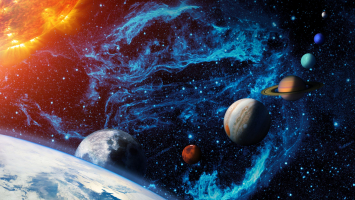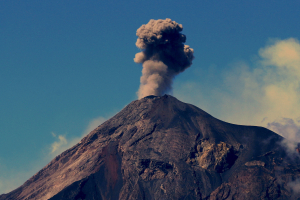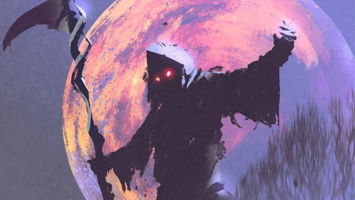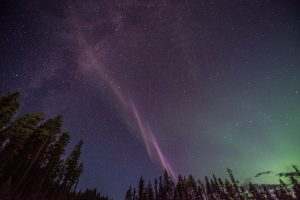Top 10 Incredibly Strange Cosmic Phenomenon
Not only is space the last frontier, but it is also a vast region of strangeness. From white dwarfs, highly colorful nebulas, dark matter, black holes, and ... read more...other objects that a person could not possibly travel through in a million years. We will literally never fully comprehend or know the whole scope of the limitless beyond. But what we now know, which includes some truly unusual phenomena, is amazing. Here are some Incredibly Strange Cosmic Phenomenon.
-
Who wouldn't want to taste their favorite show? According to recent news, a TV that you can taste is being developed. In a highly technical sense, everything has a flavor, despite the fact that some objects are obviously not meant to be tasted. Take the galaxy as an example. It has a raspberry flavor.
It appears quite foggy in certain places, especially toward the middle, if you've ever seen representations of the Milky Way in its entirety. Not only are there masses of star material there, but there are also clouds of other gases. According to astronomers, the galaxy's galactic center contains a huge cloud of ethyl formate. The flavour of raspberries is mostly attributed to ethyl formate. Additionally, it has a rum-like aroma, indicating that the galactic center is a really celebratory beverage.
SMART BANANA channel on Youtube 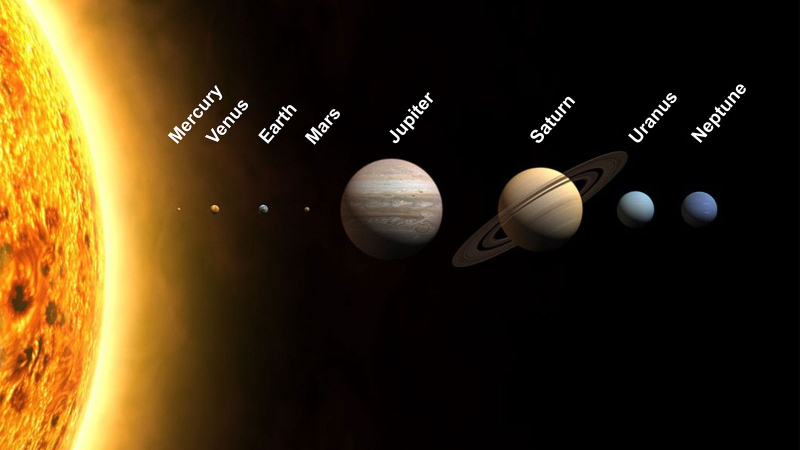
channel on Youtube -
We are aware that there are primarily two types of celestial bodies in space: planets and stars. Other objects, like as quasars, black holes, and white dwarfs, are essentially stars that have undergone significant alterations. However, the two are distinct in terms of their formation and activities.
Giant gaseous balls that are stars conduct intense chemical reactions that produce light and heat. In contrast to stars, which produce light and heat through chemical reactions, planets are either solid masses or, even if they are gas, do not do so. Usually considerably smaller and less substantial than their stars, planets circle other stars. Therefore, we are claiming that they are different things. Though perhaps not always. There is a star that collided with a black hole far away in a galaxy known as GSN 069. Because nothing could potentially escape a black hole, that nearly usually means the death of the star. This star did, in fact.
The star suffered greatly during its run-in and is currently orbiting the black hole. Due to all the material being removed from it, the black hole transformed it from a red giant into a white dwarf. Because of the black hole's influence, scientists think that the star may eventually transform into a planet rather than continuing down the usual course of stellar destruction. One day is relative in this case, and the current estimate is over a trillion years in the future, which is absurd even on a stellar timeline.Harry Evett channel on Youtube Science Channel channel on Youtube -
This one is not enough obvious while yet being almost too blatant. Because life is all around us, we tend to take it for granted. And the majority of respondents, or around 65%, believe that intelligent life must exist outside of our solar system.
But the truth is that we haven't actually noticed any signs of it. Researchers have combed a lot of space for life signs, but nothing scientific holds up. Radio signals and any other indication that someone else is out there are also aliens, not simply visitors from space. Thousands of planets and stars have been found by humans, but none that would suggest that we are alone in the universe.
That does not imply that we are not alone, but it does imply that we are comparatively odd. We are incredibly distinctive because we are unlike anything else. Perhaps we were just lucky. The idea that the cosmos is too large for humans to be alone is an intriguing one to think about in this context. How are we here alone? On the other hand, very few individuals take into account the fact that the cosmos operates on a scale that is much larger than our imagination, which also applies to time. The cosmos is not in a hurry to go somewhere. What if we are the first and most developed species and haven't discovered life anywhere else? Because, after all, someone would have to be the first. So why not us?
TheSimplySpace channel on Youtube Discovery UK channel on Youtube -
The goal of ancient alchemy was to transform something of little value, like lead, into something of considerable value, like gold, using a device known as the Philosopher's Stone. Although they were unaware of it at the time, such theory is not unscientific. When it first began, the universe was merely hydrogen. Element transformation is possible during fusion. More nuclei are added to molecules, and hydrogen turns into helium. That occurs daily in our sun.
Stars can produce elements heavier than iron, such as gold and platinum, in a process akin to a supernova. All of these elements were created by the fundamental forces of the cosmos, and as a result, over the course of millions and billions of years, entire planets have evolved that are nearly exclusively composed of single elements or fundamental compounds.
Scientists found an iron planet in 2021, while a diamond-made world made headlines in 2012. The planet Gj 1214b is largely made of water. Not to be outdone, scientists also found an asteroid named Psyche 16 that contained platinum and gold valued over $10,000 quadrillion.AstroLuv channel on Youtube Be Inspired channel on Youtube -
The Fermi Bubbles, which were originally noticed in 2010, are located right at the core of the Milky Way galaxy. A Fermi Bubble: What Is It? There are two of them in our galaxy. It's a huge glob. They form a big figure eight with one above and one below, sort of straddling the galaxy's midsection. They are around 25,000 light years away from the galactic plane. Thus, they are large blobs.
The intense plasma that makes up the Bubbles causes them to produce a lot of gamma and x-ray energy. Due to their peculiarity and rarity, little much is known about them other than the fact that their structure and location imply some connection to the galaxy's black hole. There are high energy neutrinos in them, and they appear to be energetic plasma structures connecting the blobs at the top and bottom.
There are a number of suggestions as to what might have generated the bubbles, all of which are now simply wild conjecture. These possibilities range from a star going into the black hole to multiple stars, numerous stars, several, simultaneous supernovas, and a few others.Anton Petrov channel on Youtube SciShow Space channel on Youtube -
There is no way that something with a name like Hoag's Object isn't a little strange. When you learn more about what exactly Arthur Hoag discovered back in 1950, it lives up to its potential. Hoag was an astronomer carrying out what astronomers do, which is to observe the cosmos. He was unsure of what he was witnessing until he came across something in the depths of space. It appeared at first that he had discovered a brand-new galaxy, which isn't particularly rare in and of itself. However, this galaxy appeared to be located inside of another galaxy, which was absolutely strange.
The object appears to be a gigantic blazing core encircled by a flawless ring of stars, thousands of points of light, much like our own Milky Way, only shaped into a circle in photographs of it. It is a breathtaking 100,000 light years across and 600 million light years away. Other ring galaxies have been discovered after its discovery, but this one is still mysterious. There is no proof that this ring galaxy formed through the galactic collision of two other galaxies, which is how most ring galaxies do.
Cosmoknowledge channel on Youtube Dr. Becky channel on Youtube -
The majority of planets generally follow a similar strategy throughout space. They enter an orbit around a star and continue to rotate indefinitely, or at least until a catastrophic event occurs, at least as far as we are aware. However, it's not always the case. It appears that certain planets have a rebellious streak and decided not to maintain a steady orbit around a star.
They are known as rogue planets because they roam the universe at will. What causes a rogue planet to originate is completely unknown to us. They might have been common planets like Earth and Mars that were thrown out of their orbit and propelled across space like a pool ball. Or perhaps they began as a larger object that disintegrated but lacked the density to become a star, leaving just a small, roving planet.
They are uncommon but not extremely uncommon; in fact, no fewer than 70 rogues have lately been found wandering the Milky Way by scientists. But given that we have no knowledge how they ever got started in the first place, they are uncommon. There is even the possibility that they contain life. There may be hundreds of thousands or maybe billions more of them, but they are difficult to find.V101 Science channel on Youtube Kurzgesagt – In a Nutshell channel on Youtube -
Black holes are nothing new, but do you know anything about supermassive black holes? The distinction is between a garden snail and one of those bizarre, cat-sized snails that some people occasionally keep as pets. Something about something that is larger than it should be can make you feel quite uneasy.
If there is such a thing as a "typical" black hole, it might range in size from 10 to 100 solar masses. It is therefore 10 to 100 times more dense than a star. You must agree that something 100 times the size of our sun would essentially devour our entire solar system. That dark hole is a typical one.
You can also expect to see a sizable black hole in the galaxy's center in every given case. The central black hole of our Milky Way galaxy weighs roughly 4.5 million solar masses. Although it's large, is it supermassive? Still not. The unassuming term TON 618 refers to the largest black hole that has been found so far. 66 billion solar masses have been calculated as its mass.
In comparison to the black hole in the center of our galaxy, it is more than 15,000 times more massive. To provide some further context, it has been calculated that the solar mass of all the stars in the Milky Way may reach 64 billion sun masses, which would easily wipe out not only our solar system but the entire galaxy.
Muse channel on Youtube Science Channel channel on Youtube -
Although the name of this bizarre occurrence, nuclear pasta, sounds dangerously tasty, it is not a very accurate description. What then is nuclear pasta? The strongest thing that has possibly ever existed. The dense core of neutron stars is thought to have generated something, according to researchers. When an enormously dense star becomes so big that it collapses in on itself, a neutron star is created.
Our sun would have been dwarfed by the progenitor star. The neutron star that eventually develops is exceedingly little in comparison. 20 miles or less in diameter. Even though it is little, its mass could be 25 times that of the sun that gave birth to it. The only smaller and denser celestial bodies that we are aware of are black holes.
Numerous neutrons are present inside that neutron star, thus the name. They're crammed crazily close together and exist at about 600,000 degrees Celsius. The layers in the star are produced by all of these neutrons, protons, and electrons that are closely packed. Although the center may consist of a substance known as quark-gluon plasma, the protons and neutrons that make up the crust are what give nuclear pasta its unusual moniker because that is the shape it takes.
Although it is yet hypothetical, if this substance does indeed exist on the surface of neutron stars, its extreme density would make it the strongest substance ever discovered. It is estimated that in order to penetrate it, 10 billion times the force required to crush steel would be required.
SciShow Space channel on Youtube Cosmoknowledge channel on Youtube -
At the very least, many of us are aware that space and time are related because of Star Trek. We refer to it as space-time because of this. In space, time slows down more the quicker you move. Even if it's all very interesting and mind-blowing, for the majority of us, it will always be science fiction or, at the absolute least, theoretical. But it's not necessary to be.
Any spinning body will drag space-time along with it as a result of a phenomenon known as frame-dragging, according to Einstein's Theory of General Relativity. Think of it as a whirlwind with space and time swirling about instead of water. Because the effect is so minute, it is quite challenging to see on a relatively tiny scale for anything like our planet.
White dwarf stars are the remains of once-massive stars and are 300,000 times heavier than Earth. White dwarf stars have been seen by researchers. It's also quick. On Earth, a day lasts for 24 hours, but on the white dwarf, it only lasts for roughly two minutes.
A pulsar is coupled with the white dwarf. Even though it is only the size of a city, this object is 400,000 times heavier than Earth because it is formed of neutrons that are firmly packed together. As a result of the radio waves it generates, which enable us to follow its orbit here on Earth, we have been able to determine that the pair of extremely dense stars are really dragging space-time along with them.OzGrav ARC Centre of Excellence channel on Youtube Seeker channel on Youtube












